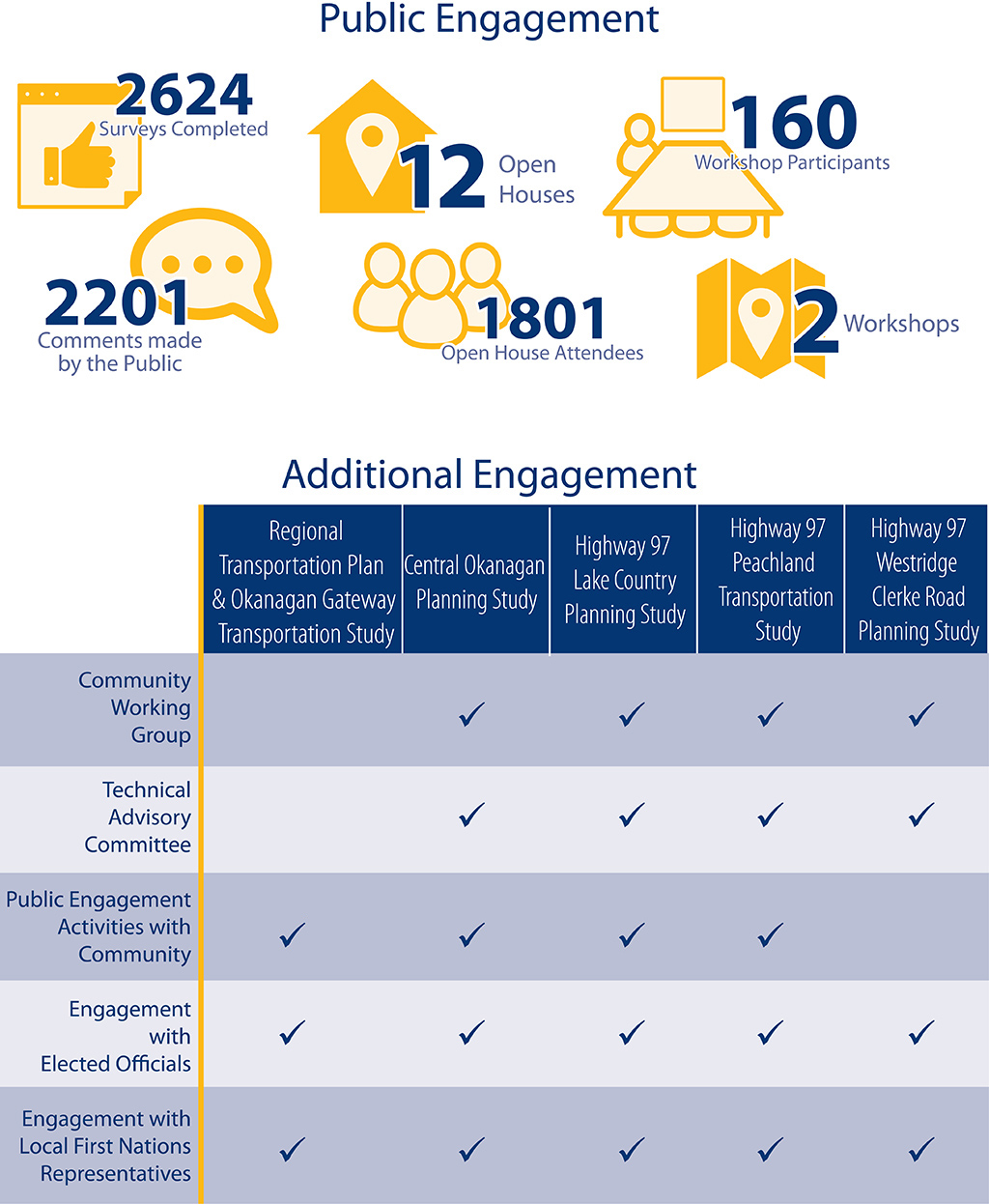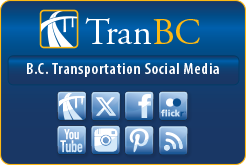Central Okanagan Integrated Transportation Strategy
The ministry has developed an integrated, multi-modal transportation strategy for Highway 97 through the Central Okanagan that will improve the movement of people and goods in the region.
The Central Okanagan Integrated Transportation Strategy has united the learnings gained from other studies conducted by the ministry and partners in the region and builds upon those outcomes to recommend projects that will drive the development of the corridor to the 2040 horizon.
The initiatives incorporated into the strategy include:
- Central Okanagan Planning Study Phase 1 (2018)
- Highway 97 – Westridge to Clerke Road Planning Study (2019)
- Regional Transportation Plan (2020)
- Hwy 97 – Peachland Transportation Planning Study (2020)
- Okanagan Gateway Transportation Study (2020)
- Hwy 97 – Lake Country Planning Study (2021)
In addition to the safety and reliability improvements which can be expected from a typical transportation study, the Central Okanagan Integrated Transportation Strategy will support and shape growth in Central Okanagan communities by aligning with the community on efforts to improve affordability, livability, and housing.
Transportation Planning with Strategic Vision
The Ministry’s 2022 Strategic Plan identified the opportunity to enhance communities in partnership with them by better aligning transportation infrastructure with economic, regional and community goals. By taking an integrated systems planning and development approach, and leveraging the work done in recent years by regional/corridor studies and other local community plans, the solutions presented in the Central Okanagan Integrated Transportation Strategy will be inclusive not only of transportation goals, but will also enhance livability in the Central Okanagan through consideration of community-positive goals, which include:
- Utilizing a coordinated approach to planning and network improvements that promote a thriving economy while also preparing for future growth;
- Providing safe, efficient, affordable, and accessible mobility choices for all people;
- Encouraging the development of diverse, resilient communities that provide the amenities, housing, and quality of life people value; and
- Supporting the Province’s objectives to address climate change and reduce greenhouse gas emissions through increased availability of sustainable options.
Community Engagement
Public and stakeholder engagement was an essential part of the Central Okanagan Integrated Transportation Strategy’s goal to create an integrated multi-modal transportation plan. To ensure inclusivity in all aspects of the strategy, engagement was guided by Gender Based Analysis Plus (GBA+). GBA+ considers many identity factors such as gender, race, ethnicity, religion, age and mental or physical ability, and how the interactions between these factors influence the way people might experience transportation initiatives. The strategy is informed by engagement with the following stakeholders:
- Municipal representatives from local governments;
- Transportation and Engineering staff representatives from local governments;
- Indigenous governments;
- BC Transit; and
- Community Representatives.
In addition, CO-ITS used the information collected from the public during the previous planning studies, which conducted extensive engagement activities throughout the Central Okanagan.
Previously Conducted Public Engagement
Each of the previously completed planning studies that are being used to inform the Central Okanagan Integrated Transportation Strategy included a complete public engagement program. Over the last seven years, there have been:
- 12 public open houses
- Over 1,800 attendees
- More than 2,600 surveys completed
- Approximately 2,200 comments made by members of the public
Responses from the previously conducted public engagement have been studied and has helped to determine the strategy’s recommendations.
Future Opportunities for Public Engagement
CO-ITS includes a number of recommendations and an implementation strategy for projects over the next 20 years. As these recommendations are reviewed and priorities are advanced, the public will be invited to provide feedback as each project progresses through the project lifecycle.
Reports
Central Okanagan Integrated Transportation Strategy (PDF, 24MB)
Central Okanagan Integrated Transportation Strategy Summary Report July 2023 (PDF, 23MB)
Contact information
Friendly Url for this Page:
gov.bc.ca/central-okanagan-integrated-transportation-strategy
For information about this study:
250-712-3660
COITS@gov.bc.ca
Subscribe
Enter your email address to subscribe to updates of this page.


